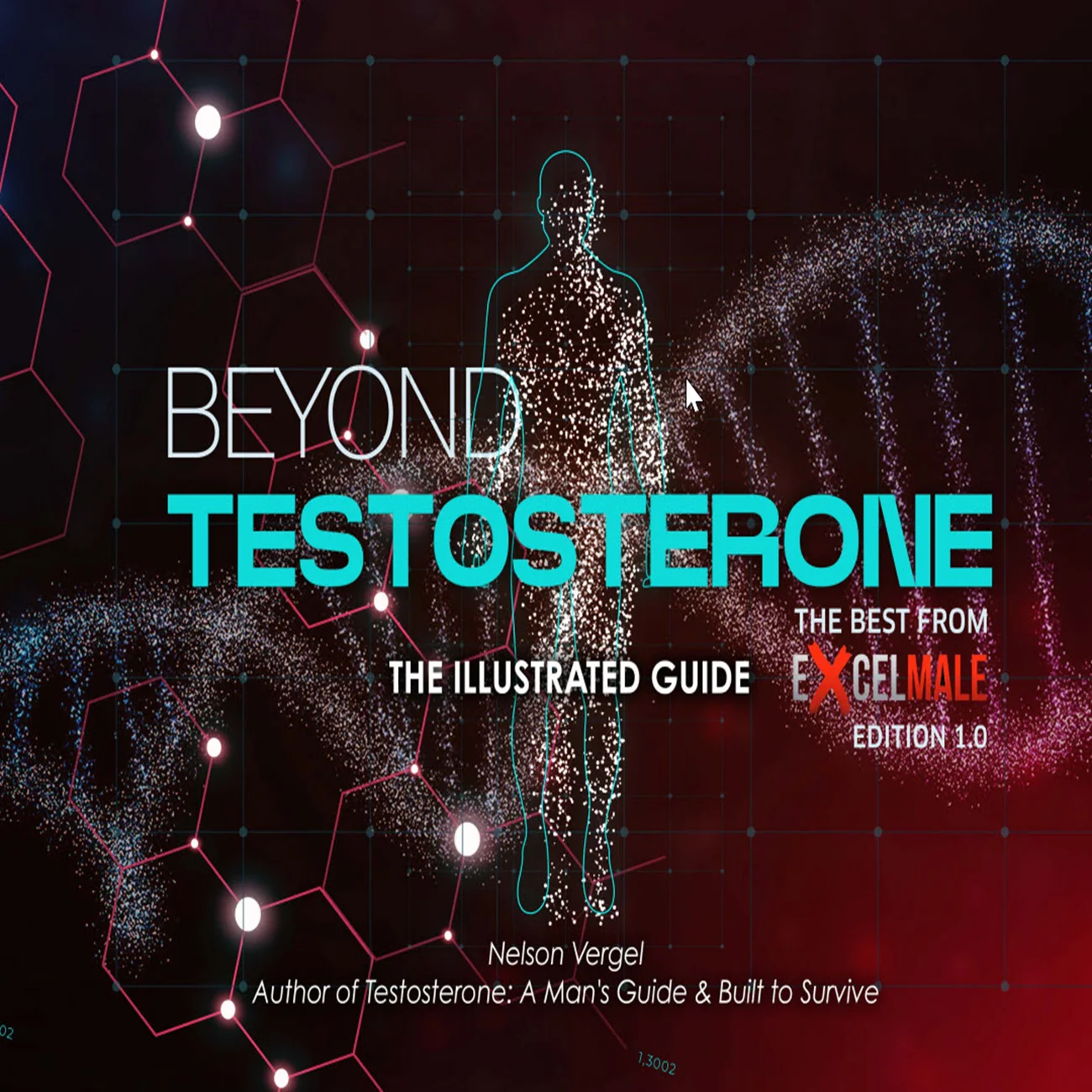madman
Super Moderator
* Currently, no clear guidelines exist, leaving clinicians to rely on incomplete but available clinical evidence. Although TST may be necessary in cases, such as successful PCa treatment or active surveillance for low-risk disease, extreme caution is advised for patients with moderate- or high-risk cancer, where benefits must clearly outweigh potential risks. In clinical practice, serum TST is a valuable biomarker for guiding treatment decisions and assessing prognosis, directly influencing outcomes and QoL inadvanced PCa patients, as supported by robust clinical evidence.
FIGURE 1 | Mechanisms of bipolar androgen therapy in PCa cell growth. This schematic summarizes the complex effects of bipolar androgen therapy (high-dose androgen) on AR signaling in PCa cells, highlighting its role in transcriptional regulation and growth inhibition. Key pathways include: S-phase arrest via origin replication sites (ORS): High androgen levels bind AR, inhibiting DNA licensing, inducing S-phase arrest, and promoting degradation of AR-associated complexes. TOP2β-induced genomic breakpoints: AR recruits TOP2β, causing DNA double-strand breaks, including TMPRSS2-ERG fusion points. LSD1-mediated repression: AR binding at specific sites (e.g., androgen receptor-binding site 2) suppresses ARand its variants, limiting cancer progression. G1-phase arrest: AR downregulates MYC and SKP2, inducing G1-phase arrest and degradation of cel lcycle regulators. Transcriptional reprogramming: AR shifts transcription toward differentiation by binding E2F sites, reducing proliferation. During the progression to mCRPC, AR protein expression increases significantly (by 50–100 times), amplifying these effects.

ABSTRACT
Serum testosterone plays a pivotal role in the pathogenesis and treatment of prostate cancer, influencing tumor growth and progression. This review synthesizes current clinical evidence on the dual role of serum testosterone as both a biomarker of carcinogenesis and a target for therapeutic intervention. We discuss the mechanisms linking androgen signaling to prostate cancer development, emphasizing the role of testosterone in androgen receptor activation and cellular proliferation. Furthermore, we explore the clinical implications of testosterone suppression strategies, including androgen deprivation therapy (ADT) and bipolar androgen therapy (BAT), highlighting their impact on patient outcomes. Emerging evidence on the prognostic significance of nadir testosterone levels, testosterone rebound, and treatment resistance is also analyzed. Finally, we address the challenges and opportunities in testosterone monitoring, aiming to enhance precision medicine approaches for managing prostate cancer. This review underscores the importance of personalized testosterone-based strategies to optimize therapeutic outcomes and improve patient quality of life.
Many studies aimed to clarify serum TST's role in prostate cancer (PCa). Androgens (TST) are widely recognized to influence proliferation, apoptosis, angiogenesis, metastasis, and differentiation of PCa in complex ways. Prostate growth is androgen-dependent; without androgens, prostate development is hindered, and androgen deprivation leads to prostate atrophy. Historically, the link between TST and PCa centered on the concept of TST as “fuel” for cancer cells. However, this traditional view has been challenged by some negative findings. Multiple TST trials lasting up to 36 months have failed to reveal any significant increase in PCa incidence, and at least 16 longitudinal studies involving hundreds of thousands of men have consistently found no long-term risk of PCa development [5, 6].
Currently, the serum TST shows a complex and contradictory association with PCa that warrants further investigation. This review aims to reassess and clarify the relationship betweenserum TST and PCa based on recent clinical evidence, further exploring the role of serum TST levels in the progression, diagnosis, treatment, and prognosis of PCa patients.
2 | Serum TST and PCa Risk
Nonetheless, whether low TST contributes causatively to PCa or results from PCa progression remains unresolved. Some studies report an increase in TST levels following radical prostatectomy(RP), suggesting that PCa itself may suppress TST production [36, 37]. Further investigation is warranted to clarify the timing and mechanisms of TST suppression in PCa's natural history and to compare pre- and post-diagnostic serum TST levels to better understand the impact of PCa on androgen biosynthesis. Although experimental data indicate that androgens promote the development of PCa in experimental systems, there is no clear clinical evidence supporting the notion that elevated endogenous TST levels drive the progression of PCa in humans [38]
3 | Testosterone Replacement Therapy (TRT) and PCa
Testosterone deficiency (TD) is associated with various health problems, such as sexual dysfunction, cardiovascular disease, and psychological problems [39]. TRT is the preferred treatment for TD and has been shown to alleviate or reverse these symptoms [40, 41]. However, its use in PCa patients raises ethical and medical concerns despite its potential benefits.
3.1 | Androgen Saturation Model
3.2 | Safety and Benefits of TRT in PCa Patients
4 | Whether Low Serum TST Promotes PCa and Guides PCa Diagnosis?
At the molecular level, low testosterone levels may impose strong selective pressure on prostate cancer cells, compelling them to enhance AR signaling in order to sustain growth. In other words, a low testosterone milieu can drive tumor progression by promoting adaptive changes in the AR signaling pathway—such as gene amplification, splice variant formation, and point mutations. These adaptive changes can be summarized as follows:
4.1 | AR Gene Amplification
4.2 | Pathogenic AR Mutations and Splice Variants
4.3 | Point Mutations in AR
5 | Serum TST and ADT
6 | Serum TST as a Central Determinant in CRPC Therapy and Emerging TST-Centered Strategies in PCa
7 | Serum TST and BAT
8 | Conclusion
Recent research has deepened our understanding of the relationship between PCa and androgens, revealing complexities beyond previous assumptions. Yet, questions remain, particularly around optimal TST dosage and BAT cycles.
Although new hormone therapies, including drugs targeting BRCA1/2 mutations and PARP inhibitors, have largely replaced traditional hormone and chemotherapy, serum TST remains a key factor in determining the efficacy of PCa treatments and in predicting patient prognosis. Additionally, TST influences PCa cell proliferation and apoptosis, impacting treatment response and disease progression.
Currently, no clear guidelines exist, leaving clinicians to rely on incomplete but available clinical evidence. Although TST may be necessary in cases, such as successful PCa treatment or active surveillance for low-risk disease, extreme caution is advised for patients with moderate- or high-risk cancer, where benefits must clearly outweigh potential risks. In clinical practice, serum TST is a valuable biomarker for guiding treatment decisions and assessing prognosis, directly influencing outcomes and QoL inadvanced PCa patients, as supported by robust clinical evidence.
FIGURE 1 | Mechanisms of bipolar androgen therapy in PCa cell growth. This schematic summarizes the complex effects of bipolar androgen therapy (high-dose androgen) on AR signaling in PCa cells, highlighting its role in transcriptional regulation and growth inhibition. Key pathways include: S-phase arrest via origin replication sites (ORS): High androgen levels bind AR, inhibiting DNA licensing, inducing S-phase arrest, and promoting degradation of AR-associated complexes. TOP2β-induced genomic breakpoints: AR recruits TOP2β, causing DNA double-strand breaks, including TMPRSS2-ERG fusion points. LSD1-mediated repression: AR binding at specific sites (e.g., androgen receptor-binding site 2) suppresses ARand its variants, limiting cancer progression. G1-phase arrest: AR downregulates MYC and SKP2, inducing G1-phase arrest and degradation of cel lcycle regulators. Transcriptional reprogramming: AR shifts transcription toward differentiation by binding E2F sites, reducing proliferation. During the progression to mCRPC, AR protein expression increases significantly (by 50–100 times), amplifying these effects.
ABSTRACT
Serum testosterone plays a pivotal role in the pathogenesis and treatment of prostate cancer, influencing tumor growth and progression. This review synthesizes current clinical evidence on the dual role of serum testosterone as both a biomarker of carcinogenesis and a target for therapeutic intervention. We discuss the mechanisms linking androgen signaling to prostate cancer development, emphasizing the role of testosterone in androgen receptor activation and cellular proliferation. Furthermore, we explore the clinical implications of testosterone suppression strategies, including androgen deprivation therapy (ADT) and bipolar androgen therapy (BAT), highlighting their impact on patient outcomes. Emerging evidence on the prognostic significance of nadir testosterone levels, testosterone rebound, and treatment resistance is also analyzed. Finally, we address the challenges and opportunities in testosterone monitoring, aiming to enhance precision medicine approaches for managing prostate cancer. This review underscores the importance of personalized testosterone-based strategies to optimize therapeutic outcomes and improve patient quality of life.
Many studies aimed to clarify serum TST's role in prostate cancer (PCa). Androgens (TST) are widely recognized to influence proliferation, apoptosis, angiogenesis, metastasis, and differentiation of PCa in complex ways. Prostate growth is androgen-dependent; without androgens, prostate development is hindered, and androgen deprivation leads to prostate atrophy. Historically, the link between TST and PCa centered on the concept of TST as “fuel” for cancer cells. However, this traditional view has been challenged by some negative findings. Multiple TST trials lasting up to 36 months have failed to reveal any significant increase in PCa incidence, and at least 16 longitudinal studies involving hundreds of thousands of men have consistently found no long-term risk of PCa development [5, 6].
Currently, the serum TST shows a complex and contradictory association with PCa that warrants further investigation. This review aims to reassess and clarify the relationship betweenserum TST and PCa based on recent clinical evidence, further exploring the role of serum TST levels in the progression, diagnosis, treatment, and prognosis of PCa patients.
2 | Serum TST and PCa Risk
Nonetheless, whether low TST contributes causatively to PCa or results from PCa progression remains unresolved. Some studies report an increase in TST levels following radical prostatectomy(RP), suggesting that PCa itself may suppress TST production [36, 37]. Further investigation is warranted to clarify the timing and mechanisms of TST suppression in PCa's natural history and to compare pre- and post-diagnostic serum TST levels to better understand the impact of PCa on androgen biosynthesis. Although experimental data indicate that androgens promote the development of PCa in experimental systems, there is no clear clinical evidence supporting the notion that elevated endogenous TST levels drive the progression of PCa in humans [38]
3 | Testosterone Replacement Therapy (TRT) and PCa
Testosterone deficiency (TD) is associated with various health problems, such as sexual dysfunction, cardiovascular disease, and psychological problems [39]. TRT is the preferred treatment for TD and has been shown to alleviate or reverse these symptoms [40, 41]. However, its use in PCa patients raises ethical and medical concerns despite its potential benefits.
3.1 | Androgen Saturation Model
3.2 | Safety and Benefits of TRT in PCa Patients
4 | Whether Low Serum TST Promotes PCa and Guides PCa Diagnosis?
At the molecular level, low testosterone levels may impose strong selective pressure on prostate cancer cells, compelling them to enhance AR signaling in order to sustain growth. In other words, a low testosterone milieu can drive tumor progression by promoting adaptive changes in the AR signaling pathway—such as gene amplification, splice variant formation, and point mutations. These adaptive changes can be summarized as follows:
4.1 | AR Gene Amplification
4.2 | Pathogenic AR Mutations and Splice Variants
4.3 | Point Mutations in AR
5 | Serum TST and ADT
6 | Serum TST as a Central Determinant in CRPC Therapy and Emerging TST-Centered Strategies in PCa
7 | Serum TST and BAT
8 | Conclusion
Recent research has deepened our understanding of the relationship between PCa and androgens, revealing complexities beyond previous assumptions. Yet, questions remain, particularly around optimal TST dosage and BAT cycles.
Although new hormone therapies, including drugs targeting BRCA1/2 mutations and PARP inhibitors, have largely replaced traditional hormone and chemotherapy, serum TST remains a key factor in determining the efficacy of PCa treatments and in predicting patient prognosis. Additionally, TST influences PCa cell proliferation and apoptosis, impacting treatment response and disease progression.
Currently, no clear guidelines exist, leaving clinicians to rely on incomplete but available clinical evidence. Although TST may be necessary in cases, such as successful PCa treatment or active surveillance for low-risk disease, extreme caution is advised for patients with moderate- or high-risk cancer, where benefits must clearly outweigh potential risks. In clinical practice, serum TST is a valuable biomarker for guiding treatment decisions and assessing prognosis, directly influencing outcomes and QoL inadvanced PCa patients, as supported by robust clinical evidence.












